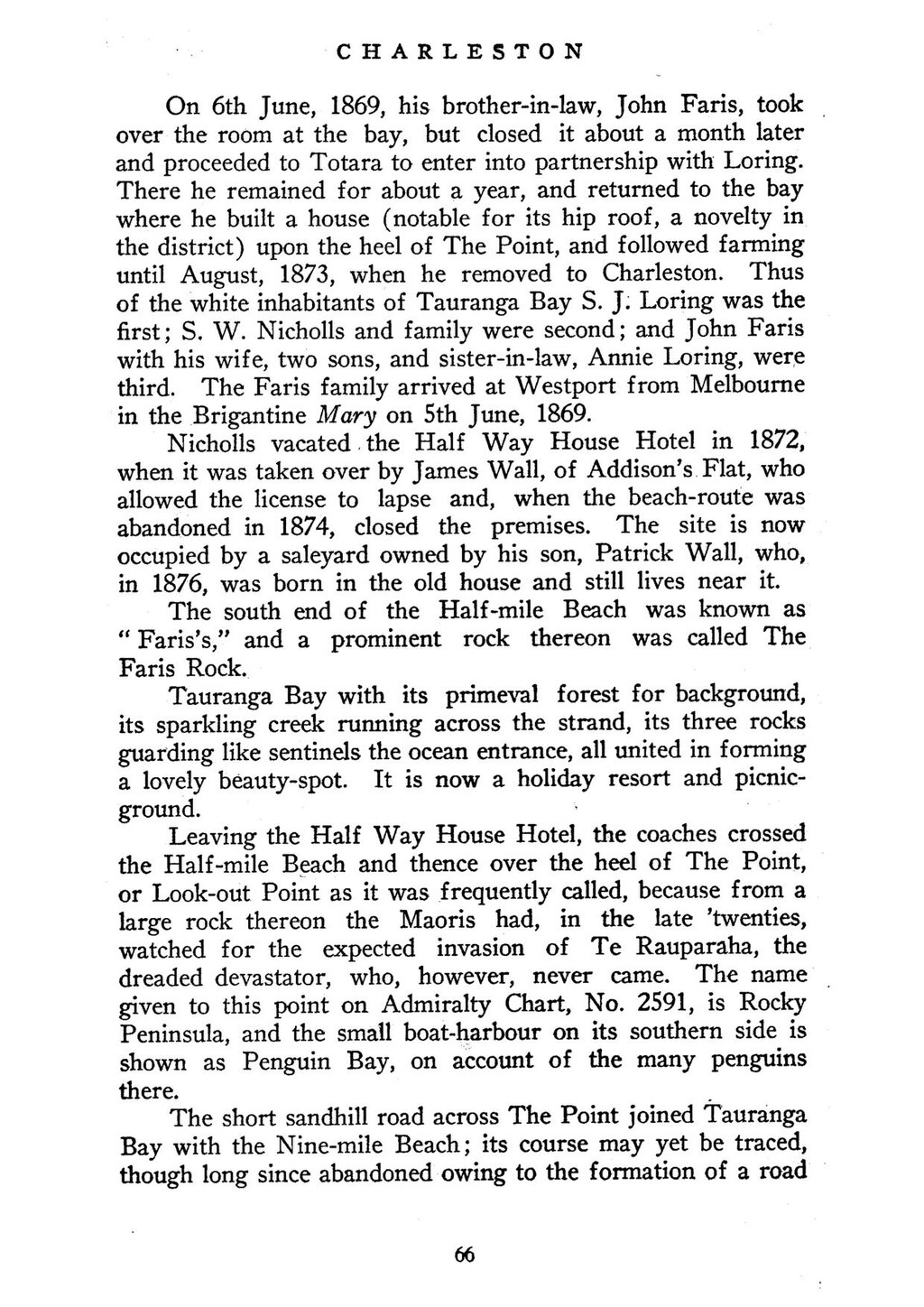CHARLESTON
On 6th June, 1869, his brother-in-law, John Faris, took over the room at the bay, but closed it about a month later and proceeded to Totara to enter into partnership with Loring. There he remained for about a year, and returned to the bay where he built a house (notable for its hip roof, a novelty in the district) upon the heel of The Point, and followed farming until August, 1873, when he removed to Charleston. Thus of the white inhabitants of Tauranga Bay S. J. Loring was the first; S. W. Nicholls and family were second; and John Faris with his wife, two sons, and sister-in-law, Annie Loring, were third. The Faris family arrived at Westport from Melbourne in the Brigantine Mary on 5th June, 1869.
Nicholls vacated the Half Way House Hotel in 1872, when it was taken over by James Wall, of Addison’s Flat, who allowed the license to lapse and, when the beach-route was abandoned in 1874, closed the premises. The site is now occupied by a saleyard owned by his son, Patrick Wall, who, in 1876, was born in the old house and still lives near it.
The south end of the Half-mile Beach was known as “Faris’s,” and a prominent rock thereon was called The Faris Rock.
Tauranga Bay with its primeval forest for background, its sparkling creek running across the strand, its three rocks guarding like sentinels the ocean entrance, all united in forming a lovely beauty-spot. It is now a holiday resort and picnic-ground.
Leaving the Half Way House Hotel, the coaches crossed the Half-mile Beach and thence over the heel of The Point, or Look-out Point as it was frequently called, because from a large rock thereon the Maoris had, in the late ’twenties, watched for the expected invasion of Te Rauparaha, the dreaded devastator, who, however, never came. The name given to this point on Admiralty Chart, No. 2591, is Rocky Peninsula, and the small boat-harbour on its southern side is shown as Penguin Bay, on account of the many penguins there.
The short sandhill road across The Point joined Tauranga Bay with the Nine-mile Beach; its course may yet be traced, though long since abandoned owing to the formation of a road
66
